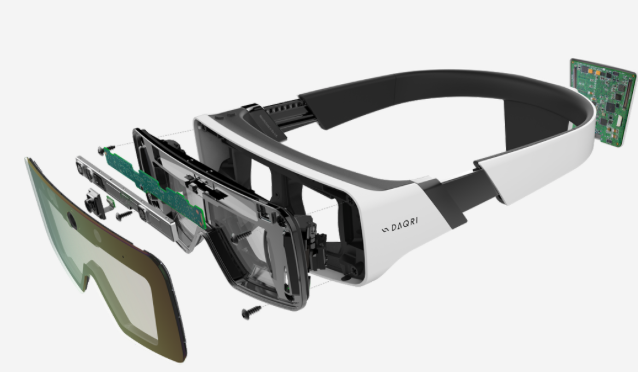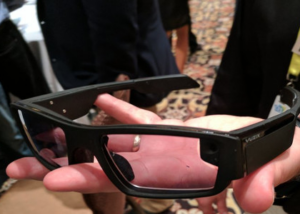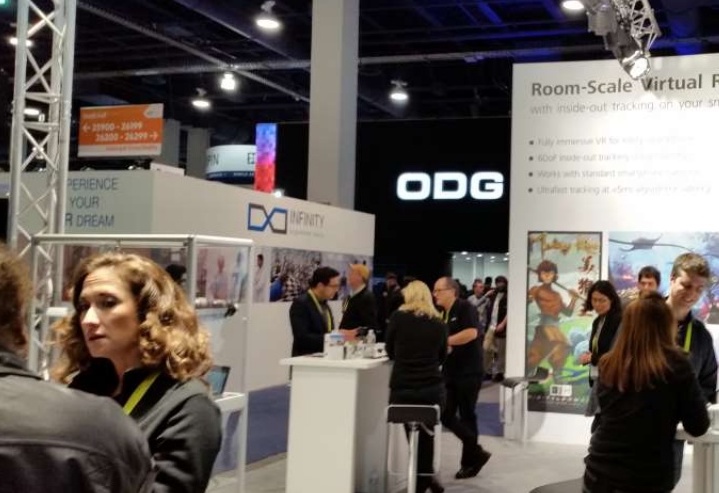Augmented reality devices as a category seems to be taking a back seat its cousin, virtual reality, with VR stealing most of the press attention, with the help of multi-billion dollar acquisitions (Oculus Rift $2B sale to Facebook). Top name brands such as Intel and Microsoft have been opening up their respective platforms for partner development,bringing along hardware partners now. Don’t forget game maker Sony’s PS-VR (now considered the top seller in the space) with 800K devices shipped exclusively to its fan base in 2016 according to Canalysis numbers.
But for AR, total device shipping numbers tell the same story with 2016 AR device sales (around 100K) dwarfed by the number of VR devices shipped in 2016, (between 2 million and 10 million depending on how you count them). AR is almost a ’rounding-error’ compared to the number of wearable devices shipped, and especially when compared to the larger mobile device market (see market data in follow up story (Virtual Reality Headset Market Forecast CES Update)
On the augmented reality side of CES, three technologies made their way to the event with some notable hardware developments, that are enabling mobile AR solutions. Engineering requirements remain constant with efforts continuing on component miniaturiization, higher resolution, longer battery life and with lower weight.
Osterhout Design Group (ODG) was at the CES AR marketplace with two new pairs of “Consumer AR” devices, dubbed the R9 (project horizon prototype) and R8. They sell for $1800 and $1000 respectively. Both will feature 1080p resolution OLED micro displays running at 80 Hz, and powered by the Qualcomm Snapdragon 835 microprocessor (and the Qualcomm VR headset reference platform). Beyond an extra 10-degree field of view (R9 offers 50- and R8 a 40-degree FOV) the $800 price difference will be based on an entry-level versus development platform device that targets the Enterprise and B2B community.
For example, the more expensive R9 has a customization (expansion) port for access to the headset’s hardware. The company sees this as a gateway for aftermarket device development (think, for example, of night-vision UV or gesture input device modules.) The R9 headset also has a 13MP front-facing stereo 3D video camera with up to 120FPS (in reduced resolution mode.) The R9 will be available first, with development kits launching in Q2 2017. The six ounce lighter R8 version will ship in Q3.
 Here’s a screen shot of the data sheet we got from Vuzix on the prototype Blade 3000 AR sunglasses device shown at CES 2017 VR marketplace
Here’s a screen shot of the data sheet we got from Vuzix on the prototype Blade 3000 AR sunglasses device shown at CES 2017 VR marketplace
Vuzix was also at CES showing off it’s new Blade 3000 prototype smart AR sunglasses. The monocular AR technology harkens back to the Google Glass days. Key component technology includes a Texas Instruments DLP (Cobra II) chip and onboard quad core ARM CPU running Android OS 5. There is an 8Mp camera that supports 1080p video.
Vuzix Blade 3000 prototype at Pepcom on day (ok, night) two at CES Make no mistake, this is a technology dense device packed into a pair of sunglasses. It includes a built-in GPS, gyroscope, and an accelerometer. Blade also features both voice (multilingual) and a touch interface with haptic (vibration) feedback and gesture control. Also planned for the device are head mount trackers and a remote control app for Android devices. Connectivity includes a microSD expansion slot, Wi-Fi and BT wireless, plus a micro USB connector.
Daqri Could be Sexy
One more pair of smart glasses for AR in the CES marketplace was the Daqri Smartglasses device that uses an Intel Core m7 processor, a depth sensor (LR200), and sports a biometric finger scanner (quick secure log-in). The device is tethered to a black box device that offloads most processing from the glasses. Daqri is targeting the B2B market and looking to integrate into enterprise tasks including process, logistics, security, safety, maintenance and operations control environs. Because of the tethered box (computer pack), the glasses can be lightweight, sleek and yes, even a bit sexy. The technology is also flexible with the company claiming the ability to “…plug and play into any workstation you choose.”
 Blow-up of Daqri prototype glasses shown at CES 2017Daqri has a developer prototype that will sell for $5000 to get into the early adopter program. The company is expecting shipping by June 2017 and accepting a 10% down payment for a place in line to hold a device. The company said its developer tools include 4D Studio Suite, DAQRI Unity extension, and DAQRI C++ API (application program interface.)
Blow-up of Daqri prototype glasses shown at CES 2017Daqri has a developer prototype that will sell for $5000 to get into the early adopter program. The company is expecting shipping by June 2017 and accepting a 10% down payment for a place in line to hold a device. The company said its developer tools include 4D Studio Suite, DAQRI Unity extension, and DAQRI C++ API (application program interface.)
So while VR continues to steal the spotlight from the AR folks, we keep seeing progress in this technology that has real potential to boost productivity from the shop floor, to maintenance in the field. More importantly, AR offers users an enhanced view of reality that can – well, change everything, if we can only get over that geek factor. Someday it will be cool to wear an AR device, and then watch out as the consumer catches on to the digital reality that unfolds. – Steven Sechrist


